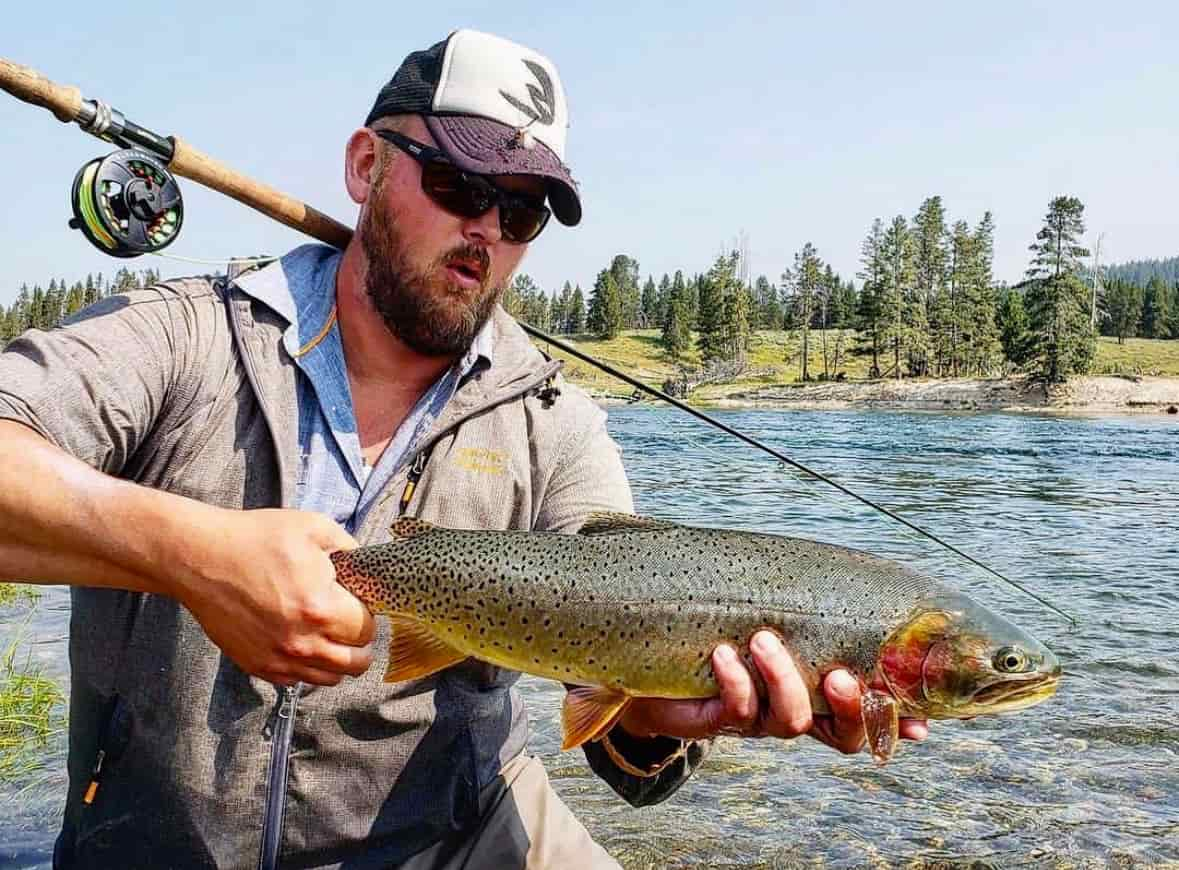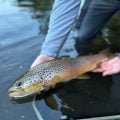Ins and Outs of Trout Spey

As an avid steelhead angler, I love swinging flies on a Spey rod. The calm serenity of the casting, the hypnotic rhythm of the swing and step, all interrupted abruptly and violently when you get a grab. I honestly can’t get enough of it, but the reality is there’s only so much steelheading a person can do. The fish are only in certain rivers at specific times of the year, so my Spey casting trips were always limited. I used to pine for those long days on the water, looking forward to them like a kid promised a trip to Disneyland. Then I discovered the world of trout Spey and realized I didn’t have to wait—I could swing flies wherever and whenever I wanted.
Trout Spey, or Micro Spey as it’s often known, refers to Spey casting equipment designed for fish species smaller than salmon and steelhead. The heavy rods and lines are toned down for swinging small streamers and nymphs, skating dry flies, and even fishing mice patterns on two-handed rods. It’s an incredibly fun way to catch trout as well as other river-dwelling species like whitefish, bass, panfish, and walleye. When you get into trout Spey, your options are limitless—as long as you know how and where to get started.
Rods and Reels for Trout Spey
Every trout Spey adventure begins with a rod. They come in two styles: traditional Spey rods and shorter Switch rods, both available in multiple weights and sizes. Spey rods are usually 12 feet or longer and excel on larger rivers and lakes, while Switch rods run between 10 and 11 feet and work best on smaller rivers, streams, and creeks. Your choice depends on the water you fish most and the species you’re targeting.
With the longer rod lengths providing more leverage, choose a rod weight slightly lower than a traditional single-hand rod. If you do most of your trout fishing with a standard 5-weight rod, a 3- or 4-weight will likely suit your Spey needs. However, for smaller fish, smaller rivers, or fishing primarily with nymphs and tiny flies, a 1- or 2-weight rod can be perfect.
Once you’ve found your trout Spey rod, next comes the reel. While several Spey-specific reel designs exist, many aren’t designed for the lighter rods and lines of trout Spey and end up too large and heavy to cast properly. Many companies now make trout Spey reels, but if you can’t find or afford one, you can create a well-balanced setup using an inexpensive large-arbor reel. Choose a reel that’s two sizes larger than your rod to accommodate the thicker trout Spey lines (for example, pair a 3-weight Spey rod with a 5-weight reel, or a 4-weight rod with a 6-weight reel).
Trout Spey Lines and Leaders
Like rods, trout Spey lines vary based on your needs. Unlike single-handed setups with one long line and head attaching to your backing, trout Spey lines are more complex. From the reel (filled with backing), you attach a running line—a slick, untapered line that runs easily through the rod guides and adds casting distance. To this running line, you attach a shooting head.
Shooting heads come in two styles: Skagit and Scandi. Skagit heads are thicker and shorter, perfect for casting larger, heavier flies. Scandi heads are thinner, lighter, and longer, making them excellent for dry flies, nymphs, and small unweighted streamers. Both styles come in different grain weights to match your rod, so research carefully to match the line to both your rod and fishing style.
Leaders are the final—and perhaps most crucial—step in a trout Spey setup. Unlike traditional fly rods where one leader suits most situations, trout Spey demands a selection of both floating and sinking polyleaders. Sinking leaders work for nymphs and streamers, with varying sink rates for different water depths. Floating leaders excel at swinging unweighted streamers and nymphs, as well as presenting dry flies. After selecting your leader, attach a 2- to 4-foot length of tippet before adding your fly.
The Tug is The Drug
Once you’ve mastered trout Spey, your fishing possibilities become nearly endless. No longer must you wait for specific seasons or plan that anadromous adventure to enjoy the aesthetic pleasure of swinging flies on a Spey rod. With trout Spey, you can swing nymphs, streamers, and dry flies for trout and other species in various conditions, getting that sweet tug wherever and whenever you need your fix—feeding your Spey addiction throughout the entire year.











